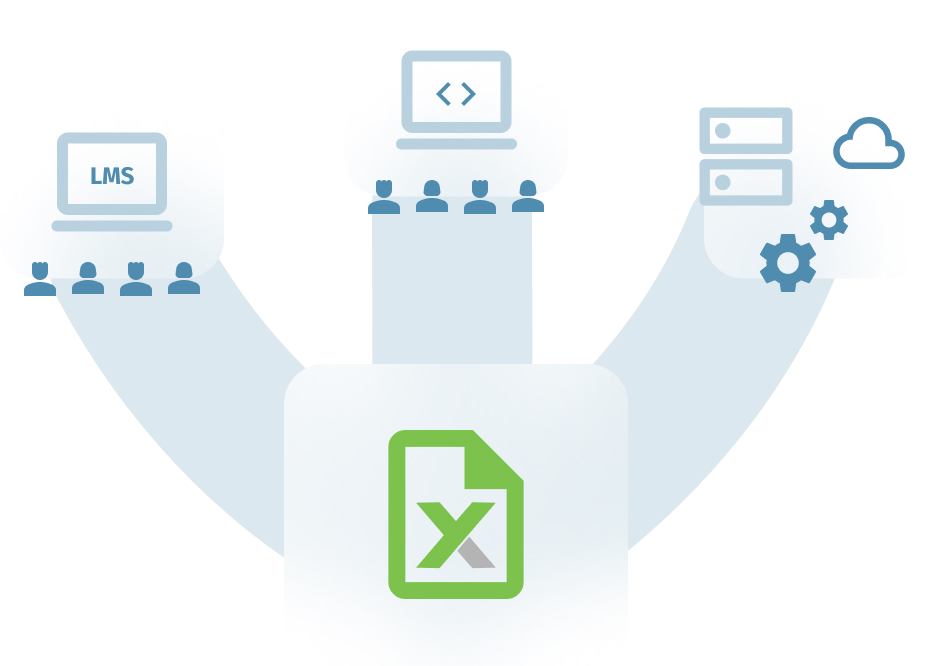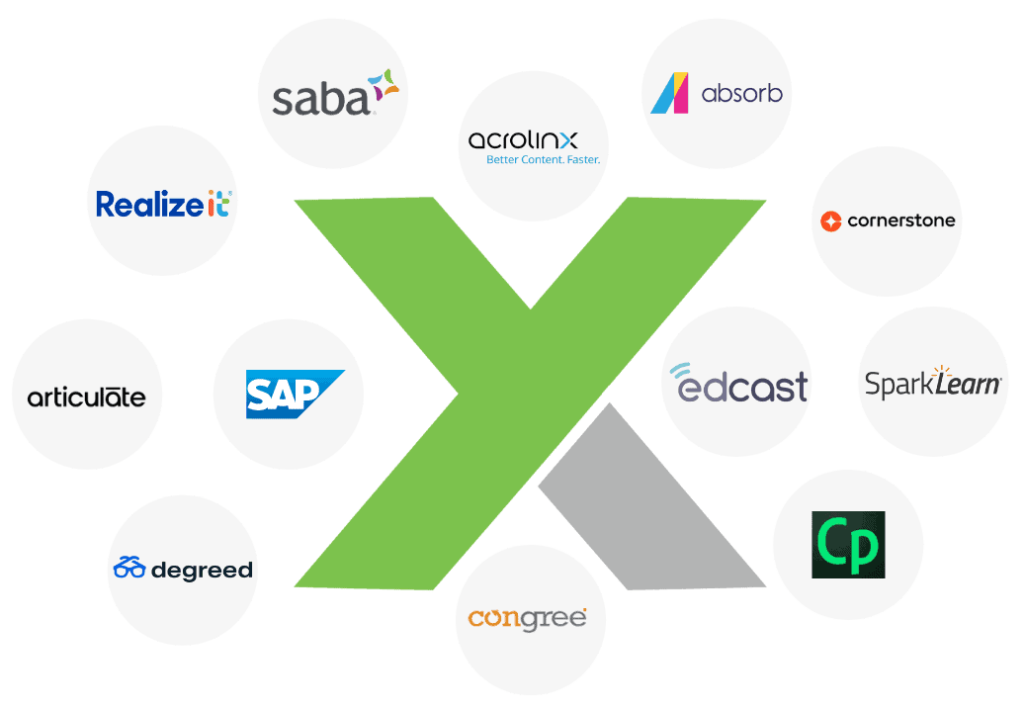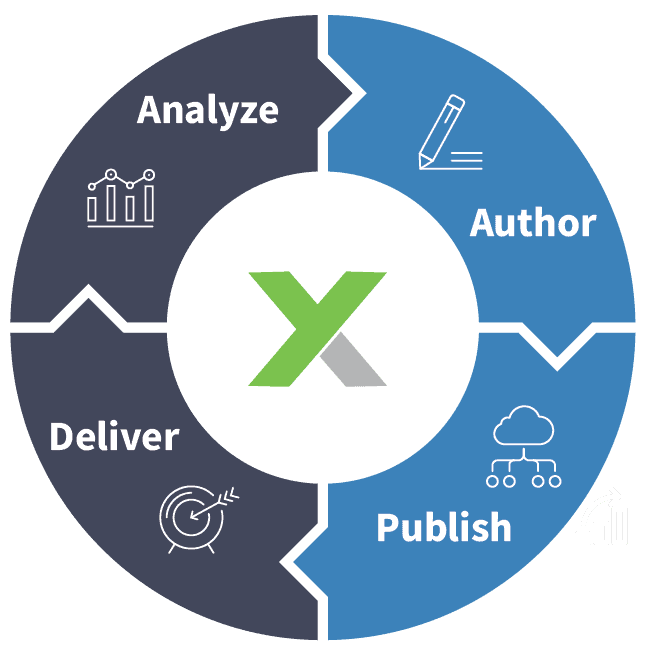In the modern workplace, low employee engagement has become a pressing issue for many organizations. With remote work on the rise and technology evolving constantly, retaining top talent is increasingly challenging. As we approach 2024, this trend is set to continue, emphasizing the importance of learning and development teams in large corporations uncovering the secret to keeping staff. This blog post examines essential strategies and trends for cultivating a high-performing workforce and achieving employee retention in today's dynamic and rapidly changing world of work.
The New Landscape: Adapting Training for the Changing Work Environment
As the workplace continues to evolve, organizations are grappling with low employee engagement. Remote work and rapid technological advances have made it harder to keep top talent. Traditional training and development methods are no longer effective in this fast-paced and dynamic work environment. To adapt to this new landscape, learning and development teams in enterprise companies must be proactive in understanding the changing needs and preferences of their workforce. They must embrace modern learning methodologies that prioritize agility, flexibility, and personalized experiences.
One key aspect of adapting training for the changing work environment is breaking down content silos and addressing version control issues. Many organizations still struggle with managing their learning content, which is often stored in different systems or formats. This fragmentation makes it difficult for employees to access the information they need when they need it, leading to frustration and inefficiency. By implementing a learning content management system (LCMS) or a component content management system (CCMS), organizations can centralize their content and ensure that it is easily accessible and up to date.
"Xyleme’s platform and the templates we have created have been outstanding. With 200+ content authors developing content, it was the only way we could provide content with creativity and variance without sacrificing scale."
-Wells Fargo
Bridging the Gap: Tackling Content Trapped in Silos and Version Control Issues
 To bridge this gap and ensure that employees have access to the information they need when they need it, organizations must implement strategies to break down content silos and address version control issues. One effective solution is the adoption of a Learning Content Management System (LCMS) or a Component Content Management System (CCMS). These systems allow organizations to centralize their learning content, making it easily accessible and up-to-date. By consolidating content into a single platform, employees can easily find and access the information they need, eliminating frustration and inefficiency.
To bridge this gap and ensure that employees have access to the information they need when they need it, organizations must implement strategies to break down content silos and address version control issues. One effective solution is the adoption of a Learning Content Management System (LCMS) or a Component Content Management System (CCMS). These systems allow organizations to centralize their learning content, making it easily accessible and up-to-date. By consolidating content into a single platform, employees can easily find and access the information they need, eliminating frustration and inefficiency.
Another aspect of bridging this gap is ensuring efficient content version control. With multiple versions of content floating around, it becomes challenging to ensure that employees are accessing the most up-to-date and accurate information. By implementing robust version control mechanisms within the LCMS or CCMS, organizations can track and manage content revisions, ensuring that employees always have access to the latest and most relevant learning materials.
With Xyleme, J&J has adopted a microlearning approach and can now easily reuse content across different outputs and audiences—slashing content development time by more than 60%—all while reducing the cost of J&J’s training programs across the board.
Additionally, organizations must invest in content curation and maintenance processes. This involves regularly reviewing and updating learning content to reflect changes in the industry, technologies, or best practices. By establishing clear processes for content updates and maintenance, organizations can ensure that their learning materials are always relevant and accurate, saving time and resources in the long run.
Addressing content trapped in silos and version control issues is a critical step in building a high-performing workforce. By centralizing learning content, implementing efficient version control mechanisms, and establishing robust content curation processes, organizations can ensure that their employees have access to the right information at the right time, leading to improved engagement, productivity, and retention.
The Art of Data Interpretation: Turning Granular Learning Data into Actionable Insights
Data is everywhere in today's digital world, and the learning and development field is no exception. Organizations collect a vast amount of data from their learning platforms, including learner behaviors, progress, and engagement. However, the real challenge lies in turning this granular learning data into actionable insights.
Another important aspect of data interpretation is measuring the effectiveness of training programs. By analyzing the data, L&D professionals can determine which training methods, formats, or content are most effective in achieving desired outcomes. This allows them to optimize their training programs and focus resources on what works best for their workforce.
Data interpretation also involves understanding learner behaviors. By analyzing data on how employees engage with learning materials, L&D professionals can gain insights into preferred learning styles, content preferences, and delivery methods. This information can guide the design and delivery of future training initiatives, ensuring that they are tailored to meet the specific needs and preferences of employees.
Furthermore, data interpretation can help identify trends and patterns. By analyzing the data over time, L&D professionals can spot recurring issues, challenges, or areas of improvement. This allows them to take a proactive approach to addressing those issues and continuously improve their learning programs.
Seamlessness in Connectivity: Integrating Your Learning Tech Stack for Efficient Processes
In today's digital landscape, seamless connectivity is crucial for efficient processes in the modern workplace. Learning and development teams in enterprise companies must prioritize integrating their learning tech stack to ensure a smooth flow of information and resources. By doing so, organizations can improve the learning experience for employees and drive productivity and engagement.
 Integrating your learning tech stack allows different systems to communicate and share data seamlessly. This means that employees can enjoy the benefits of single sign-on, where they only need to log in once to access all the learning platforms and resources they need. This not only saves time and eliminates frustration but also promotes a sense of unity and coherence in the learning experience.
Integrating your learning tech stack allows different systems to communicate and share data seamlessly. This means that employees can enjoy the benefits of single sign-on, where they only need to log in once to access all the learning platforms and resources they need. This not only saves time and eliminates frustration but also promotes a sense of unity and coherence in the learning experience.
Automation is another key advantage of integrating your learning tech stack. By connecting different systems, you can automate processes such as enrollment, course assignments, and reporting. This eliminates manual tasks and reduces the risk of human error. For example, when an employee completes a course, the system can automatically update their training record and generate a completion certificate, saving time and ensuring accurate documentation.
Furthermore, integrating your learning tech stack allows for multi-channel and multi-device delivery of learning content. This means that employees can access training materials and resources through various platforms and devices, such as desktop computers, smartphones, or tablets. Whether they are in the office, on the go, or working remotely, employees can easily access the learning content they need, promoting a flexible and accessible learning experience.
“We sell hundreds of SCORM self-study courses, both for retail consumption (delivered on our own LMS) and for corporate clients (delivered on their LMSs). Before Xyleme, it had become virtually impossible to distribute updated content to all customers each time a course was updated. Now, we can update all customers, both retail and corporate, with a single course publish. This is a game-changer for us, and it’s also a game-changer for our customers.”
Financial Trade Association
A well-integrated learning tech stack also facilitates data sharing and analysis. With data from various systems consolidated in one place, learning and development teams can gain a holistic view of employee performance, engagement, and progress. This data can then be used to identify trends, track the effectiveness of training programs, and make data-driven decisions to improve learning initiatives.
The Content Challenge: Streamlining Discovery, Updates, and Maintenance for Time Efficiency
 Another important strategy is implementing efficient update processes. Learning content needs to be regularly reviewed and updated to reflect changes in the industry, technologies, or best practices. By establishing clear processes for content updates, organizations can ensure that their learning materials are always relevant and accurate. Automation can also play a role in streamlining update processes, such as automated notifications for content updates or automatic content archiving after a certain period of time.
Another important strategy is implementing efficient update processes. Learning content needs to be regularly reviewed and updated to reflect changes in the industry, technologies, or best practices. By establishing clear processes for content updates, organizations can ensure that their learning materials are always relevant and accurate. Automation can also play a role in streamlining update processes, such as automated notifications for content updates or automatic content archiving after a certain period of time.“I estimate we have cut content development time by 66% simply by being able to easily reuse what’s already been created.” Alina Health
By streamlining content discovery, updates, and maintenance, organizations can ensure that their learning materials are always relevant, accurate, and easily accessible. This saves time and resources for L&D teams, allowing them to focus on more strategic initiatives and ultimately driving employee engagement and retention. In the fast-paced world of work, time efficiency is key, and by addressing the content challenge, organizations can unlock the secret to building a high-performing workforce.
Preparing for 2024: Five Trends Shaping Learning and Development in Enterprise Companies
- Personalization: One-size-fits-all training programs are becoming a thing of the past. In the future, organizations will need to tailor their training initiatives to meet the specific needs and preferences of individual learners. Personalization can be achieved through adaptive learning technologies, which use data and algorithms to deliver customized content and learning paths based on each learner's strengths, weaknesses, and goals. By embracing personalization, organizations can create more engaging and effective learning experiences.
- Microlearning: With the rise of remote work and busy work schedules, employees have less time to dedicate to traditional training programs. That's where microlearning comes in. Microlearning involves breaking down training content into small, bite-sized modules that can be consumed in a few minutes. This approach allows learners to fit learning into their busy schedules and provides information in a more digestible and accessible format.
- Virtual Reality (VR) and Augmented Reality (AR): VR and AR technologies have the potential to revolutionize the way we learn. These immersive technologies can create realistic and interactive learning environments, allowing employees to practice skills and scenarios in a safe and controlled setting. Whether it's simulating a customer interaction or a complex task, VR and AR can enhance learning retention and provide hands-on experiences that traditional training methods cannot replicate.
- Social Learning: Learning doesn't have to be a solitary experience. In fact, social learning, which involves collaboration, discussion, and knowledge sharing among peers, can be a powerful tool for employee development. By incorporating social learning features into training platforms, organizations can facilitate peer-to-peer learning, mentoring, and communities of practice. This fosters a sense of belonging and encourages continuous learning and growth within the organization.
- Continuous Learning: The concept of learning as a one-time event is being replaced by the idea of continuous learning. In the fast-paced and ever-changing world of work, employees need to constantly update their skills and knowledge to stay relevant. Organizations must embrace a culture of continuous learning, providing employees with ongoing opportunities for development and growth. This can be achieved through the use of microlearning, personalized learning paths, and resources that are easily accessible and updated regularly.
Our Customers Have Powerful Journeys
Explore our insightful customer stories to see how our solutions have helped organizations like yours achieve tangible results.






